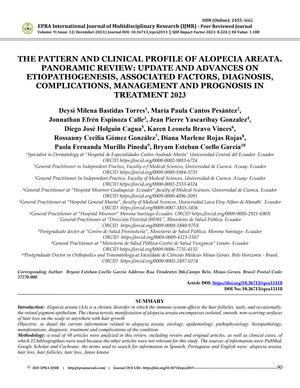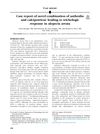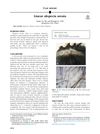The Pattern and Clinical Profile of Alopecia Areata: Panoramic Review, Update, and Advances on Etiopathogenesis, Associated Factors, Diagnosis, Complications, Management, and Prognosis in Treatment 2023
December 2023
in “
EPRA international journal of multidisciplinary research
”

TLDR Alopecia areata causes sudden hair loss, has genetic links, and can be managed but not cured.
Alopecia areata (AA) is an autoimmune disorder characterized by sudden, uneven hair loss that can affect any part of the body, with a lifetime risk of approximately 2%. It is the second most common non-scarring alopecia after male and female pattern alopecia. The condition is linked to genetic factors and associated with medical and psychiatric comorbidities such as depression, anxiety, and other autoimmune disorders. Although there is no cure, various treatments can improve symptoms, and the potential for hair regrowth exists since hair follicles are not permanently damaged. Further research is necessary to enhance treatment strategies.



